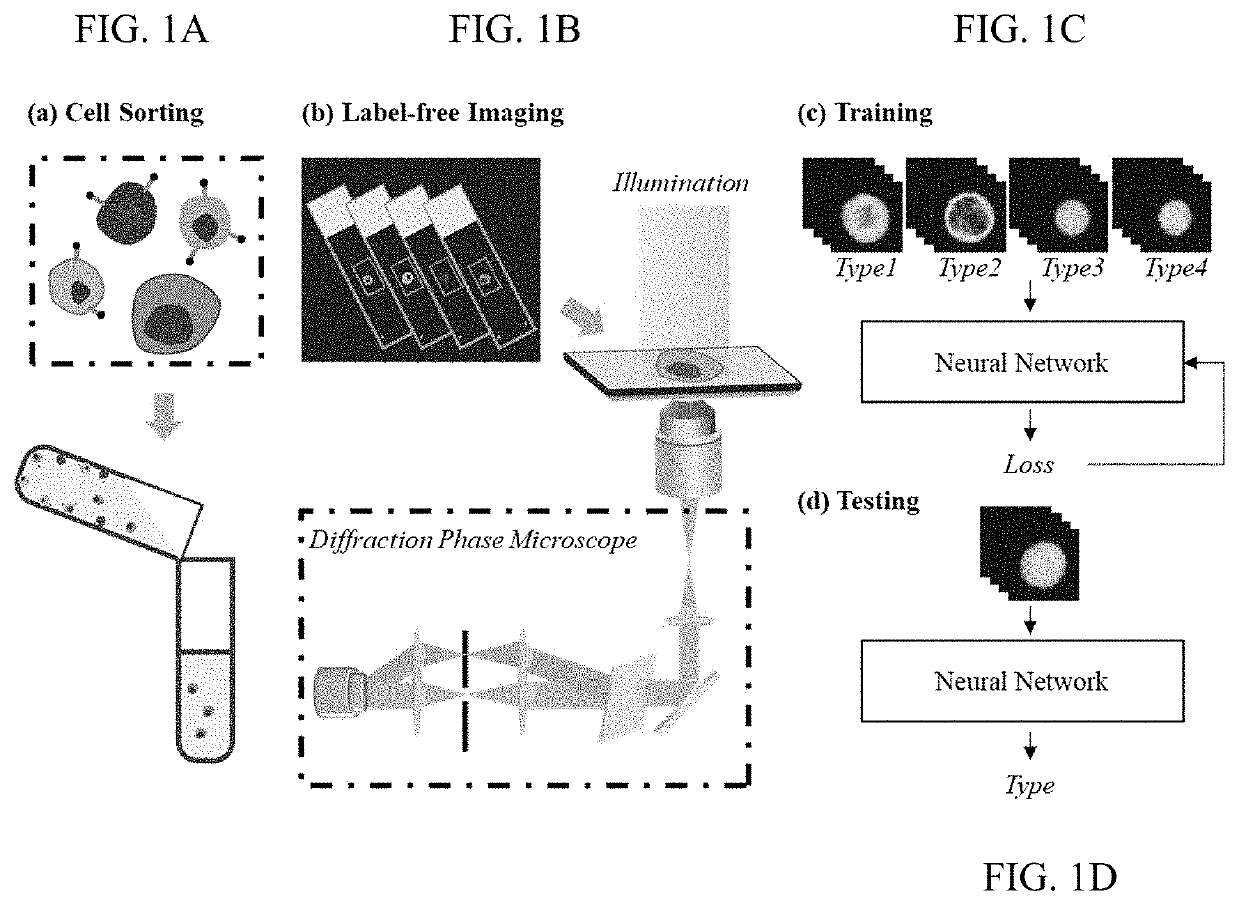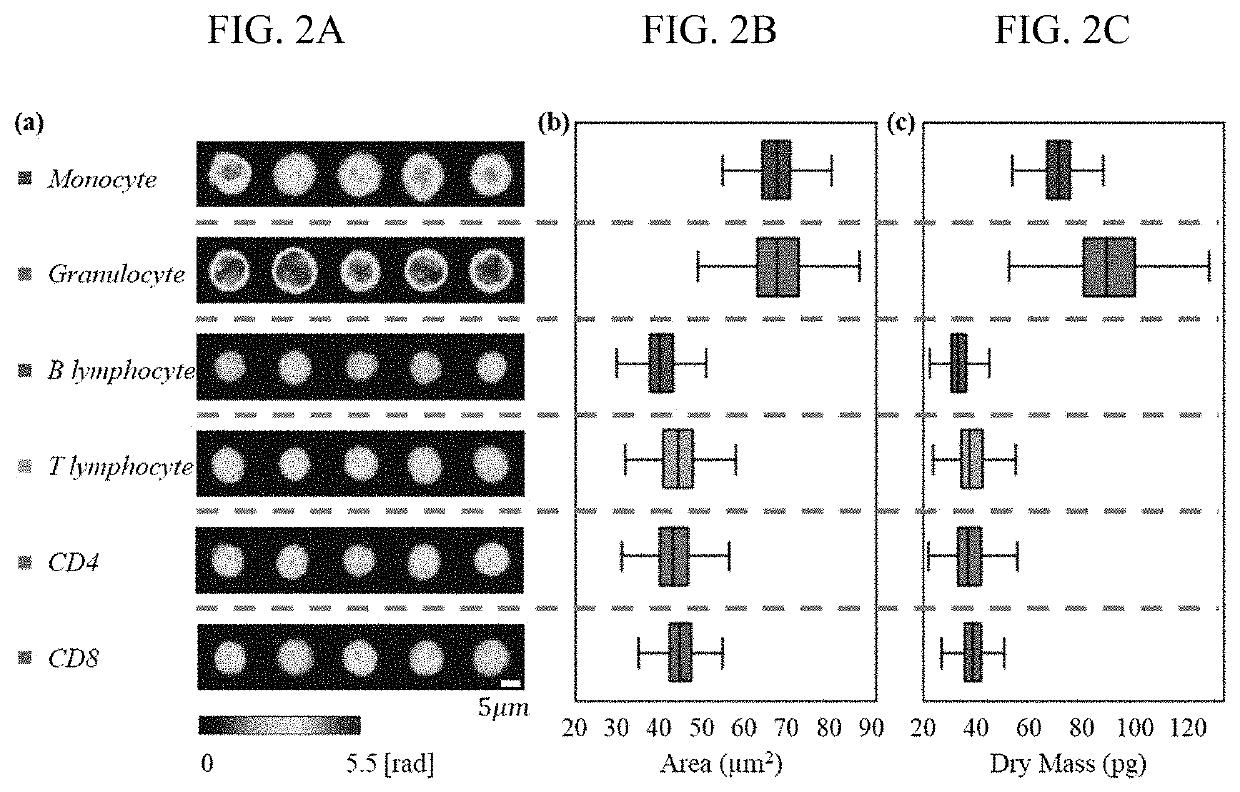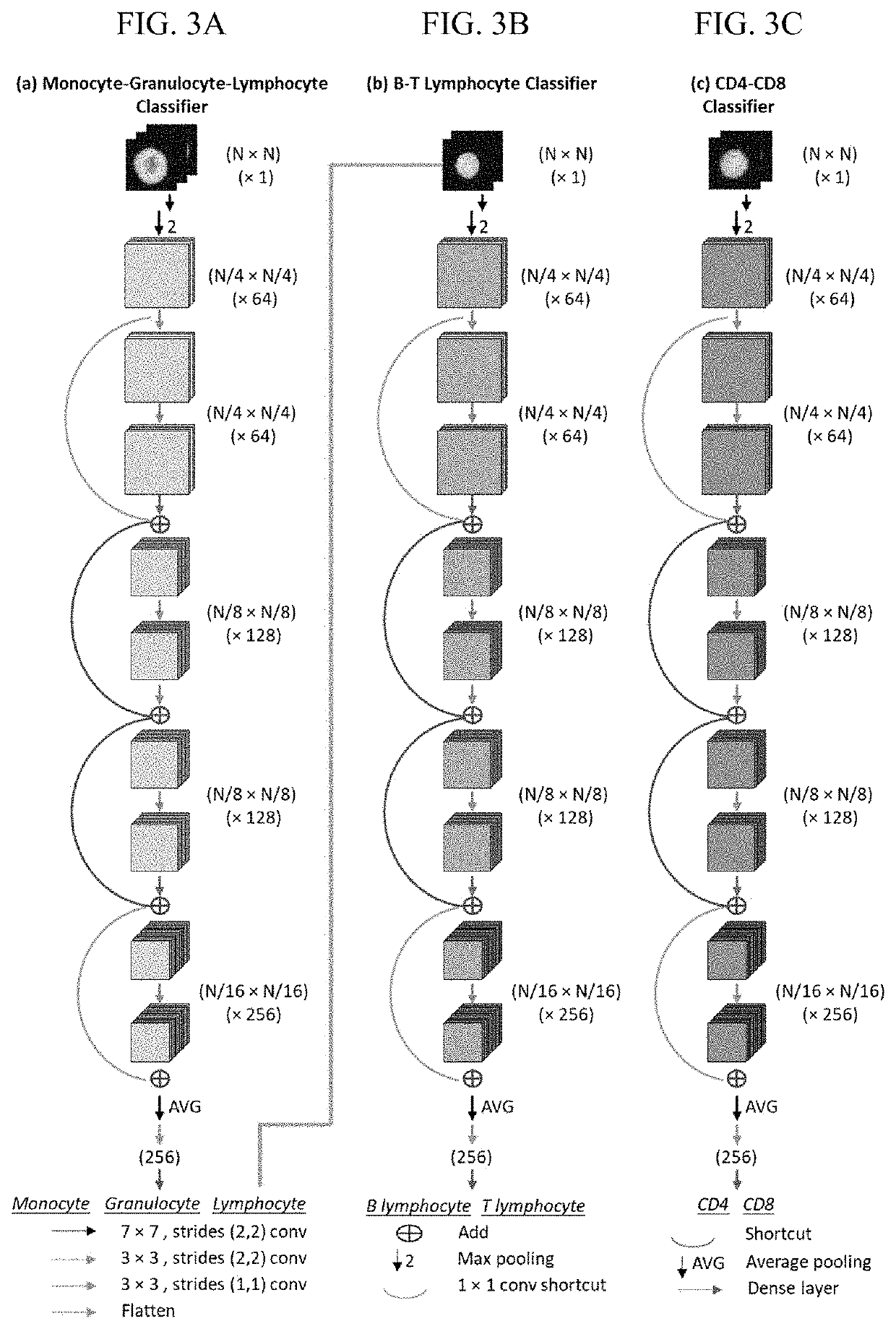Artificial intelligence enabled reagent-free imaging hematology analyzer
a technology of artificial intelligence and reagents, applied in image analysis, image enhancement, kernel methods, etc., can solve the problems of inconvenient high-throughput application in clinical settings, inconvenient labeling of cells for further testing, and insufficient confirmation of robustness and applicability of subject methods
- Summary
- Abstract
- Description
- Claims
- Application Information
AI Technical Summary
Benefits of technology
Problems solved by technology
Method used
Image
Examples
example 1
ystem
[0055]In this work, the classification of human leukocyte types is achieved using a QPM system and a neural network, as conceptually illustrated in FIGS. 1A-1D. The exact configuration of the QPM system is based on a diffraction phase microscope (DPM)52,66,67 which can provide highly stable and accurate phase imaging of cells. The imaging resolution of the QPM system is 590 nm, while the field of view is around 61 μm×49 μm. Compared with optical diffraction tomography35,49, QPM does not necessitate a complex imaging system and expensive computation requiring a large amount of data, and the system is relatively cost-effective with a smaller footprint. To get the data set for the neural network to learn from, the leukocyte samples were isolated from the fresh blood samples of six healthy donors within 24 hours of blood extraction. The blood sample used for the leukocyte separation for each donor was in 1-3 ml range, depending on the minimum volume requirement as per manufacturer'...
example 2
Classification Method
[0056]Phase maps of labeled leukocytes of four different types from multiple donors were measured to construct the main dataset, including 857 monocytes, 738 granulocytes, 700 B lymphocytes, and 821 T lymphocytes (i.e., 1521 lymphocytes in total). Additionally, we had a phase map dataset for two subtypes of T lymphocytes, containing 211 CD4 cells and 220 CD8 cells. Representative phase maps for each leukocyte subtype are shown in FIG. 2A. Based on these phase maps, area and dry mass distributions were generated for all the leukocyte types (FIGS. 2B and 2C). Note that cell dry mass quantifying the total protein content in a cell can be precisely determined from the phase map, and it has been well explored for cell phenotyping17,68. As shown in FIGS. 2B and 2C, monocytes and granulocytes have similar areas but very different dry masses (p-value <0.001), while they are well separated from all the other lymphocytes (B and T lymphocytes and CD4 and CD8 cells) through...
example 3
ation Results
[0058]To test the classification capability of the AIRFIHA system, a test set was first constructed by randomly selecting 100 cells from four leukocytes, i.e., monocytes, granulocytes, and B and T lymphocytes. Notably, the test set was not contained in the training set. The classification results were evaluated using recall, precision, and F1 score69. F1 score, which is the harmonic mean of recall and precision, is used to characterize the final classification result. The F1 scores from the first classifier for monocytes, granulocytes, and lymphocytes are 94%, 95.4%, and 97.7%, respectively (detailed numerical values for recall, precision, and F1 are provided in Table 3). The F1 scores from the second classifier for B and T lymphocytes are 88.2% and 88.8%, respectively (detailed numerical values for recall, precision, and F1 are provided in Table 4). The overall detection results are summarized and visualized in FIG. 4A and Table 5. The precision-recall curves70 for eac...
PUM
 Login to View More
Login to View More Abstract
Description
Claims
Application Information
 Login to View More
Login to View More - R&D
- Intellectual Property
- Life Sciences
- Materials
- Tech Scout
- Unparalleled Data Quality
- Higher Quality Content
- 60% Fewer Hallucinations
Browse by: Latest US Patents, China's latest patents, Technical Efficacy Thesaurus, Application Domain, Technology Topic, Popular Technical Reports.
© 2025 PatSnap. All rights reserved.Legal|Privacy policy|Modern Slavery Act Transparency Statement|Sitemap|About US| Contact US: help@patsnap.com



